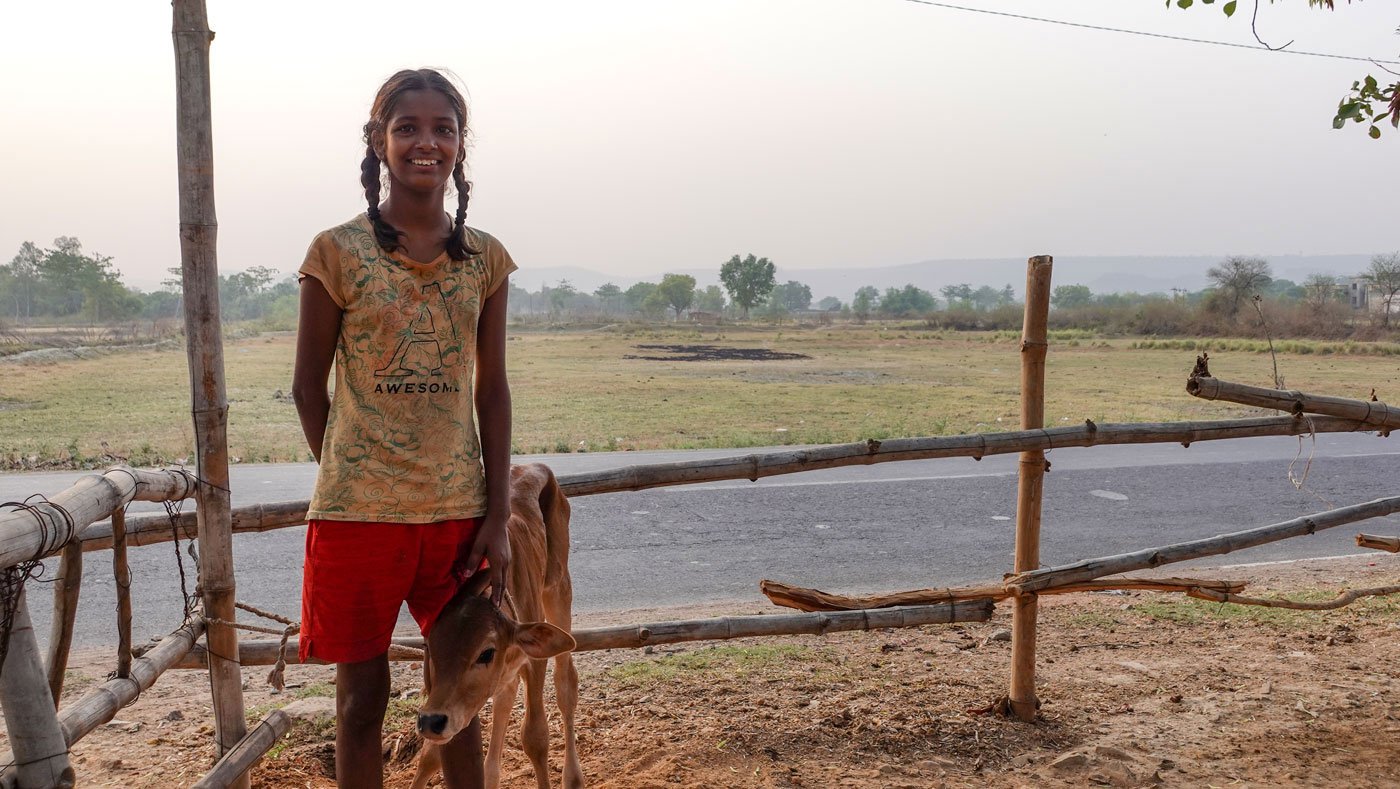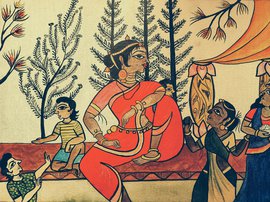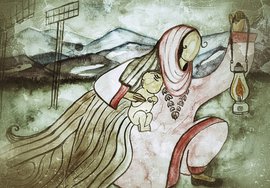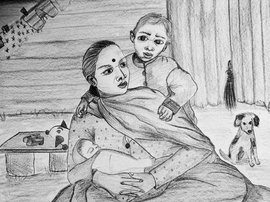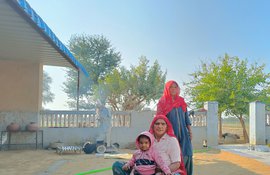“I have got to do these chores before going to school, otherwise who else will?” asks 15-year-old Kiran as she unties a young calf to drink his mother’s milk. It is 5 in the morning. Her unwell mother and younger brother Ravi are still asleep inside her one room house. She’ll have to tie the calf back in the shed before cleaning the house. Then her grandfather will milk the cow.
She has got up early as usual, but today Kiran is not looking forward to either work or school. It is one of those days, the first day of her menstrual cycle, when the fatigue is high. And her stomach cramps have got particularly worse since the pandemic. But still, she must finish her chores before 6.30 a.m. “The morning assembly begins at 7 and it takes me 20-25 minutes to walk up to school,” she says.
The government school where Kiran Devi studies in Class 11 is two kilometres from her house in Karwi tehsil of Uttar Pradesh’s Chitrakoot district. She lives here with her brother, Ravi, their mother, Poonam Devi, 40, and grandfather, Khushiram, 67. Her grandfather handles the family’s 800 sq. ft of land right behind their house, where they grow wheat, chana , and sometimes seasonal vegetables. Poonam has terrible pain in her wrist and knees, which limits her ability to work around the house and, in turn, overburdens Kiran with more responsibilities.
What would have been a routine for Kiran has become an agonising exercise. “I don’t mind doing these little chores, it just becomes a problem when I get bad period cramps.”
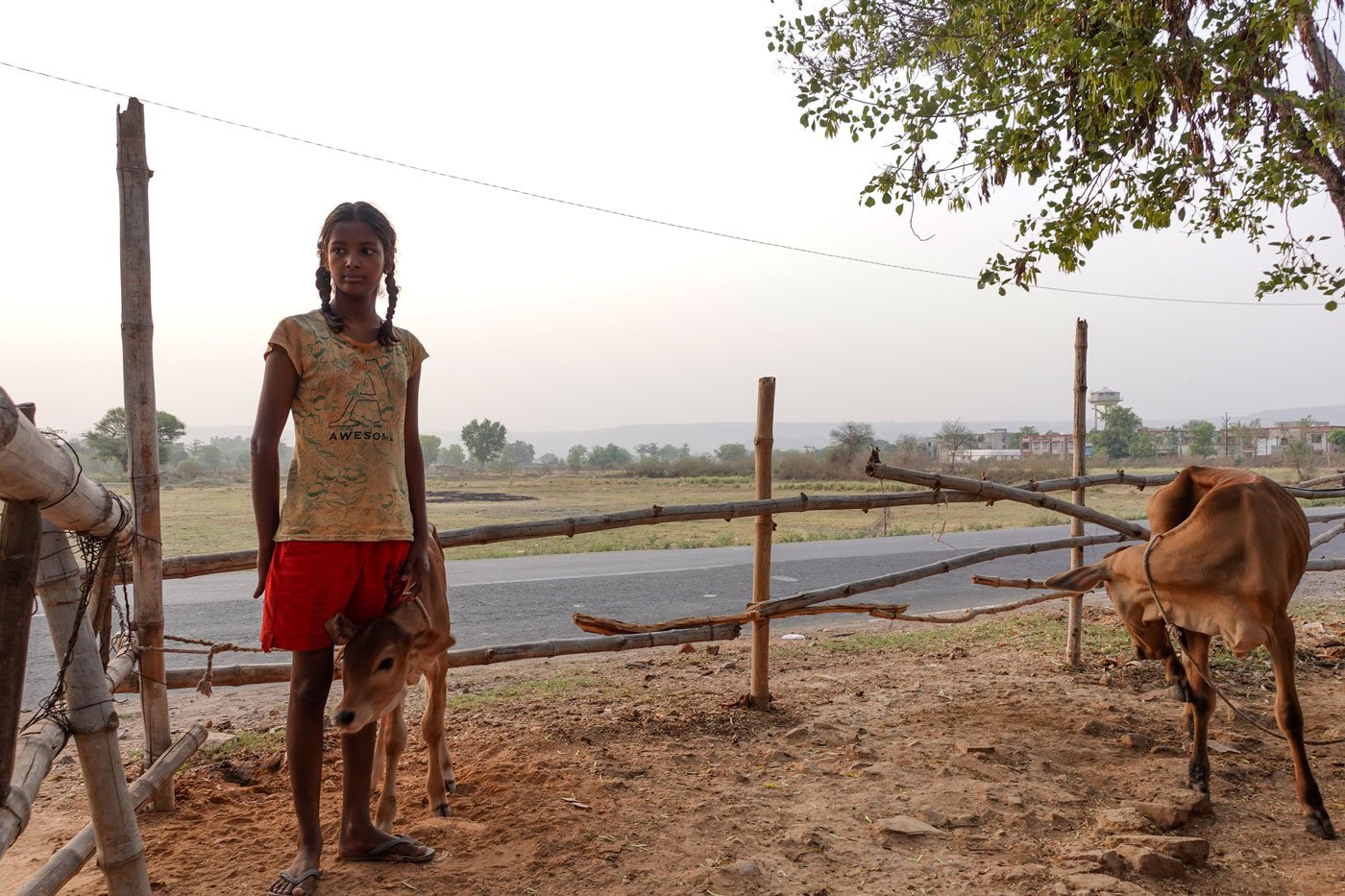
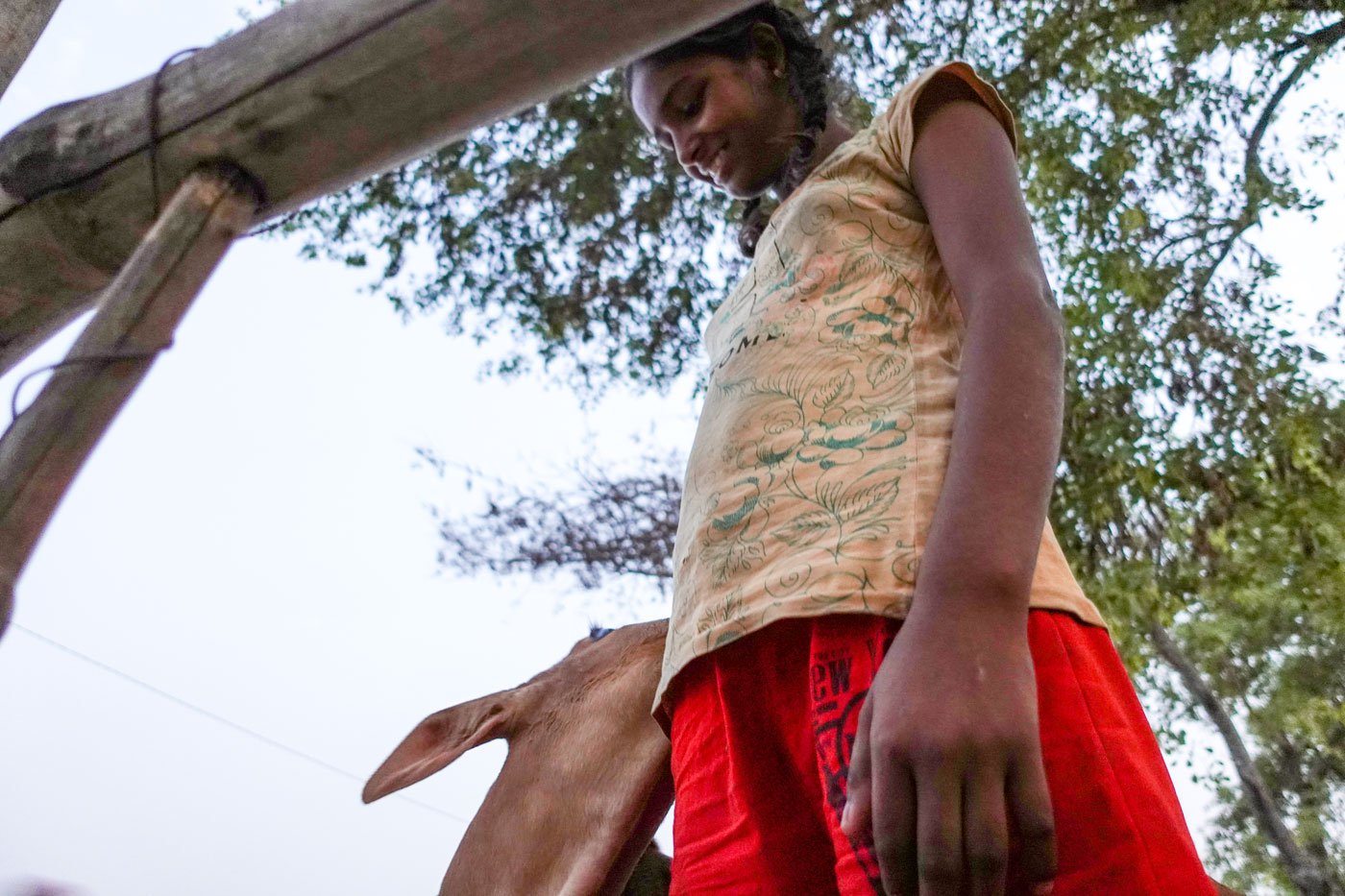
Kiran Devi, 15, gets up long before dawn to tend to the calves in the shed
Kiran is one among over 10 million girls in Uttar Pradesh eligible for free sanitary pads who have been affected by the breakdown of the Kishori Suraksha Yojana during the Covid-19 pandemic. KSY is a UP government programme providing free pads to girls from Classes 6 to 12. As part of the state programme , inaugurated in 2015 by then chief minister of UP, Akhilesh Yadav, each girl is supposed to receive a pack of 10 sanitary napkins.
It was impossible to locate a figure of how many of these girls in UP were actually receiving pads under that programme. But even if it were a tenth of that number, it would be over a million girls from poor families who were unable to access free sanitary napkins for over a year and a half since the pandemic struck.
Also, claims of the successful resumption of the programme are questionable. While some urban areas have seen it reinstated, Kiran still gets no free sanitary pads. And can't afford to buy any commercial brands. And she is just one of many thousands of girls who cannot.
Kiran has finished sweeping the house, cattle shed and the entire area outside her house leading to the main road. She runs inside to look at an old wall clock placed on a rack. “Oh, it is 6:10 already!” she says, alarmed. “Mummy, you have to make my braids quickly, I’ll be right back,” she shouts and heads out of the house towards a plastic tank to bathe in an open area, almost by the roadside.
She chuckles at my question about the bathroom. “What bathroom? We don’t even have enough water in the toilet, how can we have a bathroom? I use the toilet to change my soiled cloth,” she says. Kiran hesitates to say that she uses a cotton cloth since the sanitary napkins that she received from school stopped since the first lockdown due to Covid-19. Two years after the pandemic, the government schools in many districts in UP haven’t been able to restart the sanitary napkin distribution programme.
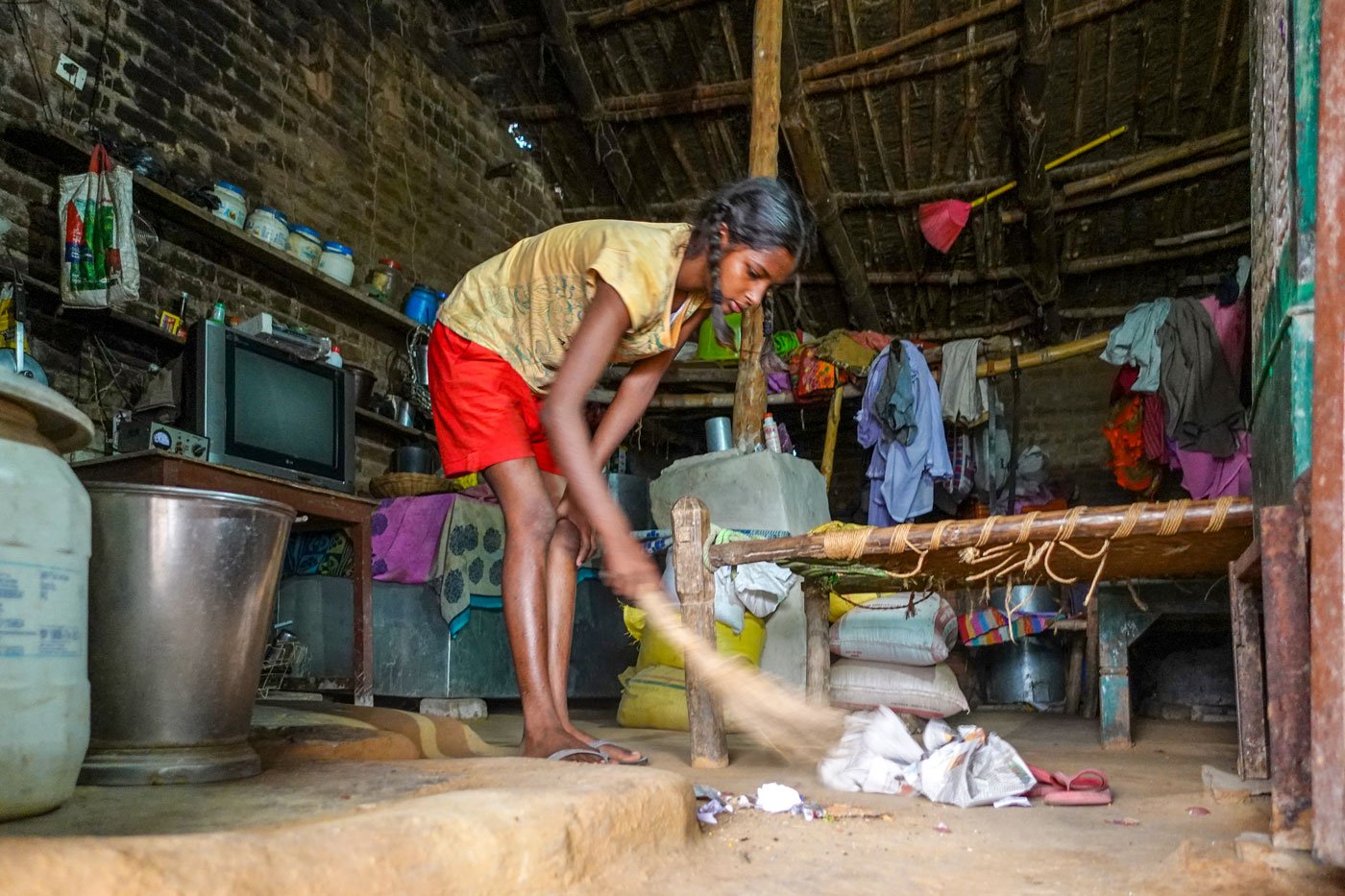
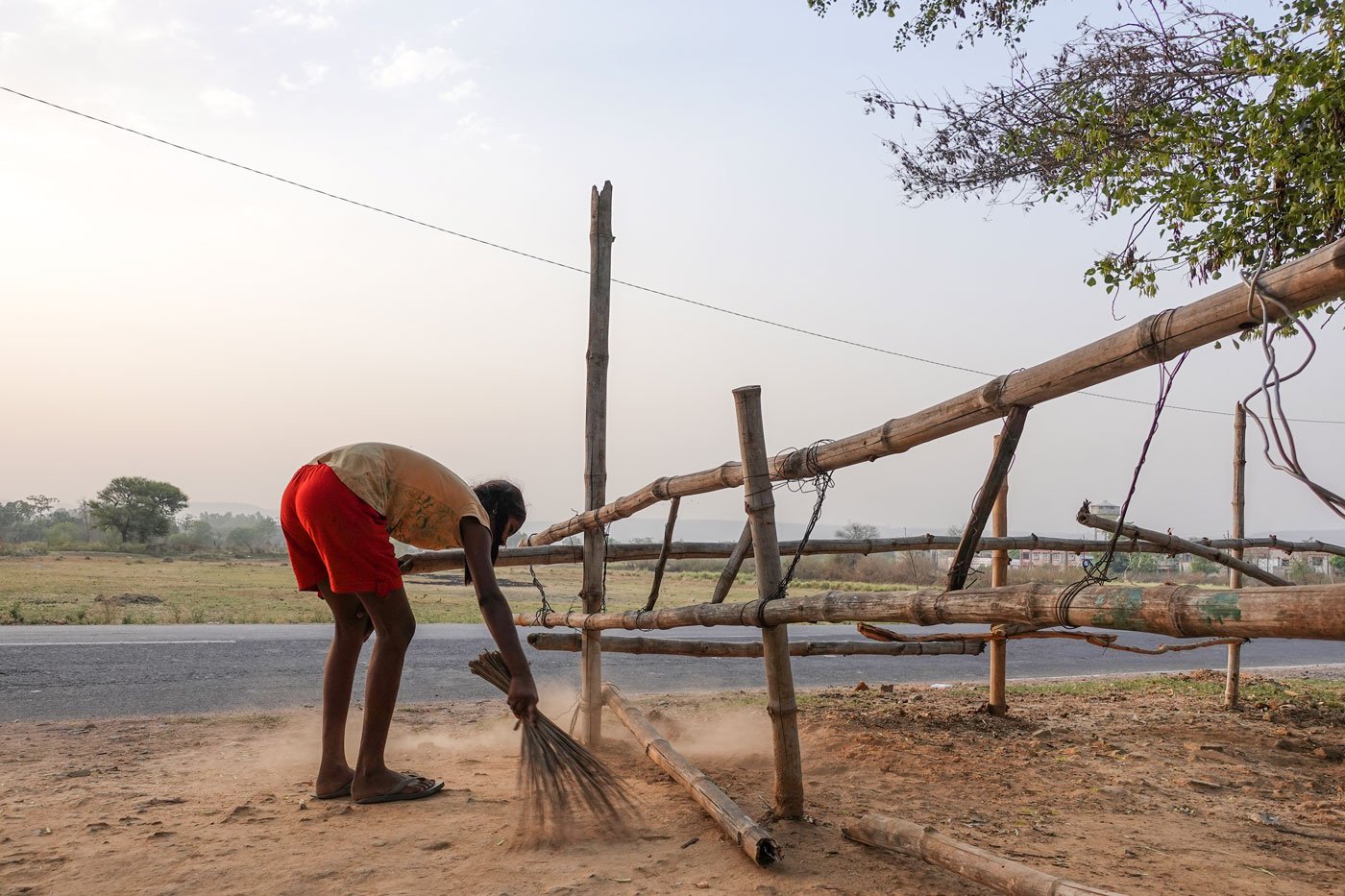
No matter what, Kiran has to clean the house and cow shed by 6:30 every morning and get to school by 7 a.m.
“One of my classmates had recently asked the teacher for one when she started bleeding during classes, but she was told that there was no stock yet. So, another friend of ours gave her a hanky to use,” says Kiran. “Earlier, whenever we needed pads in school, we used to ask our teachers. Then the lockdown came, and schools closed. After that, when the schools re-opened, there were no pads. We were told that there is no supply in the school anymore,” she adds.
Kiran’s periods have started getting painful. In the last two years since the pandemic set in, she has been getting severe cramps on day one. Though no one in her family tested positive for Covid-19, the entire Chitrakoot district was severely affected. Many of her neighbours were infected. A few were even admitted to the district hospital three kilometres away.
While the direct impact of Covid-19 can cause a heavier or even more painful menstrual flow, “indirect effects through stress, anxiety, malnutrition and changes in sleep and physical exercise can impact reproductive health and the menstrual cycle,” states a UNICEF brief . The paper released in October 2020, titled ‘Mitigating the impacts of COVID-19 on menstrual health and hygiene’, suggests that “menstrual abnormalities are much more common after the pandemic than before its onset.”
Phoolwatiya, who lives some four kilometres from Kiran’s house, had stopped getting sanitary napkins from school. “Right after my school closed [for the pandemic], I was back to using cloth, washing the pieces, and drying them inside the house,” she told PARI in 2020. She and thousands of other girls in rural Chitrakoot did get help in the form of sanitary napkin donations then, which lasted for at least 3-4 months. It’s been two years since then and she has once again gone back to using cloth. “I only use kapada because the school doesn’t provide pads anymore. I think the facility has ended for us now,” she says.
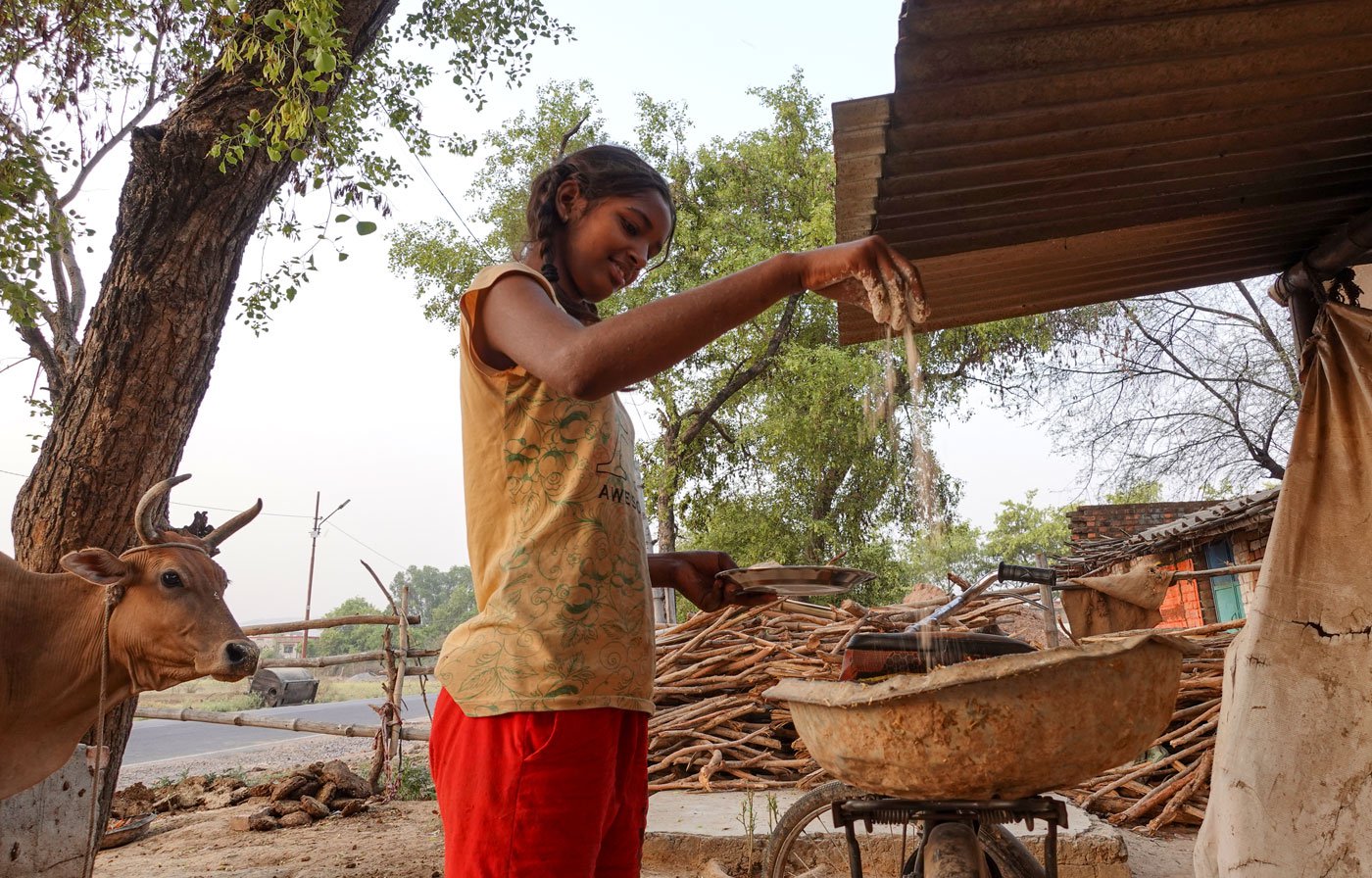
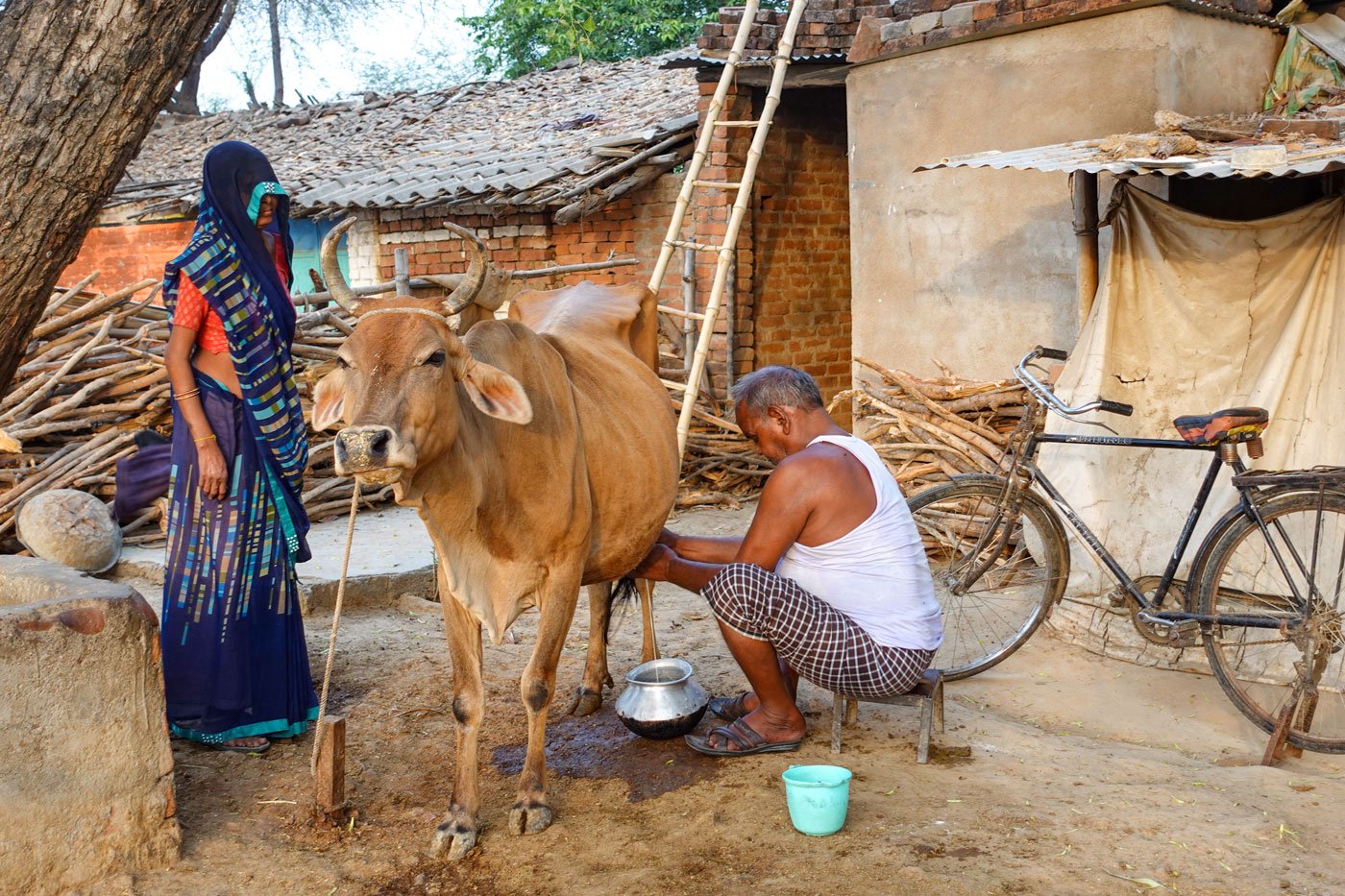
Left: Kiran preparing the cow feed. Right: Her grandfather, Khushiram, milks the cow in the morning. Her mother, Poonam Devi (in the blue saree), suffers from pain in her wrist and knees, which limits her ability to work around the house
However, the situation is better in the state capital claims Shweta Shukla, a teacher at Composite School, in Sarosa Bharosa, in Kakori block of Lucknow district. “Students in our school get the pads regularly, every month. We must maintain a register and utilise the pads supplied to us,” she says. But she is not surprised to hear about the situation in rural UP. “You know a situation like this is common in government schools and we cannot do anything about it, especially when we cannot afford private schools and a better environment for our children,” she adds.
Poonam Devi and her husband always dreamt of sending their children, Kiran and Ravi, to a private school. “My children are good at studies. Isn’t there a way I could send my children to a school like the Kendriya Vidyalaya?” she asks. “Even though we do not have so much money, their father always wanted our children to go to a good school – so that they could also go to the cities and work, and live in luxury,” she adds. But about 10 years ago, when Kiran was barely five, her father, an electrician, died while on work. Things got challenging with Poonam being ill. The income from the family farm is never enough. At such a time, getting her need for menstrual hygiene being taken care of at school was a blessing.
However, tens of thousands of girls like Kiran are returning to unhygienic practices during their periods. Uttar Pradesh has 10.86 million girls studying in Classes 6 to 12 according to School Education in India , a 2016-17 report of the National Institute of Educational Planning and Administration. The scheme of sanitary napkin distribution was introduced to aid female school students missing their classes during their periods every month. In 2015, that number was 28 lakhs in the state. Now one wonders what the state of women’s health and hygiene would be in UP with the disappearance of the scheme.
The district magistrate of Chitrakoot, Shubhrant Kumar Shukla, has a simpler view of the situation. “I believe there could be some supply issues post pandemic,” he says, “otherwise girls should get the sanitary napkins. But, for the earliest solution, every girl in need can approach their nearest anganwadi centre and take the sanitary pads from there. They can even avail folic acid supplements there.” Kiran and her neighbourhood friends, however, have no idea about this. And while the anganwadis in Chitrakoot have a supply of sanitary napkins, they are meant only for new mothers, as an anganwadi worker from Sitapur block suggests.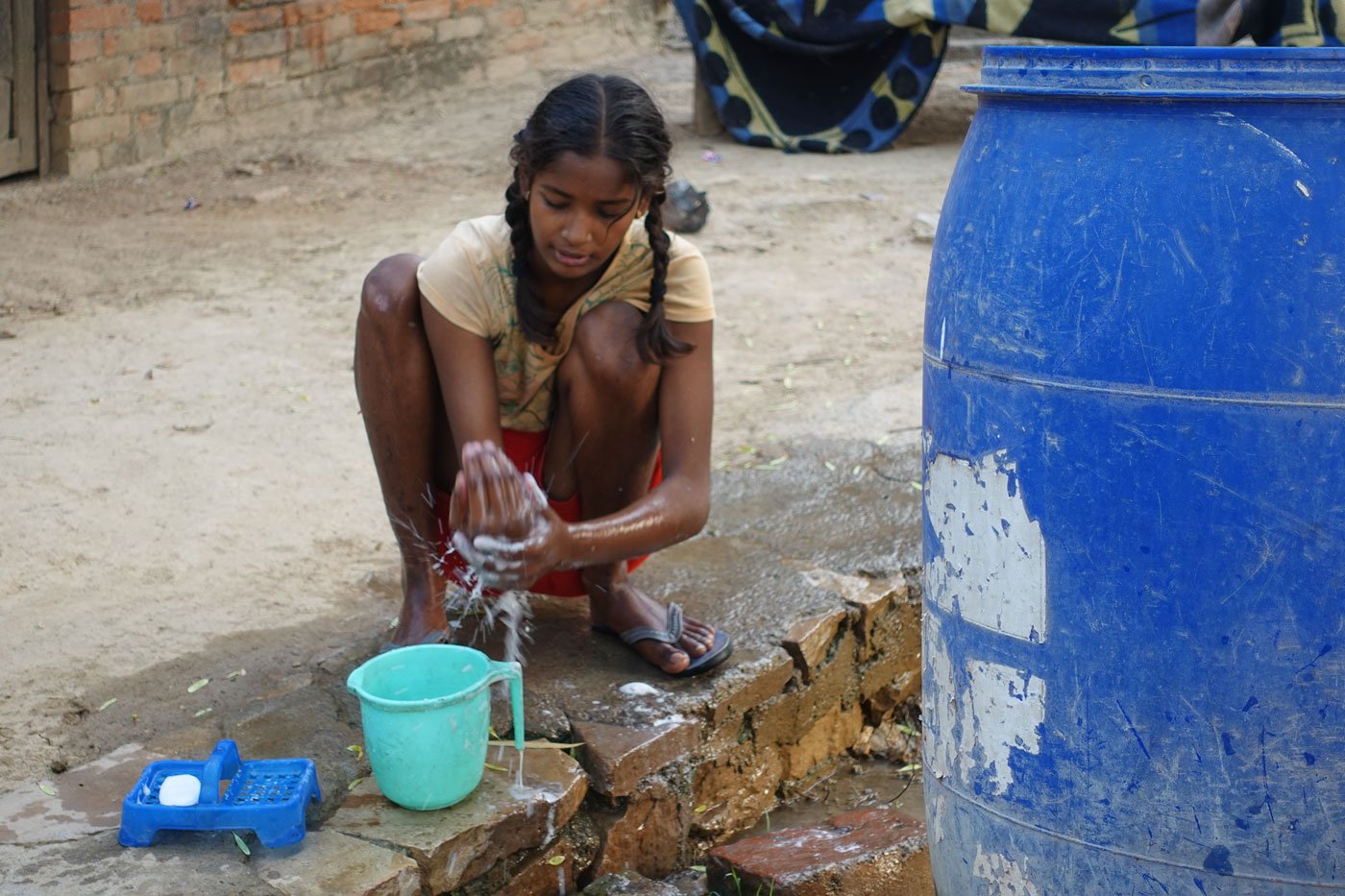
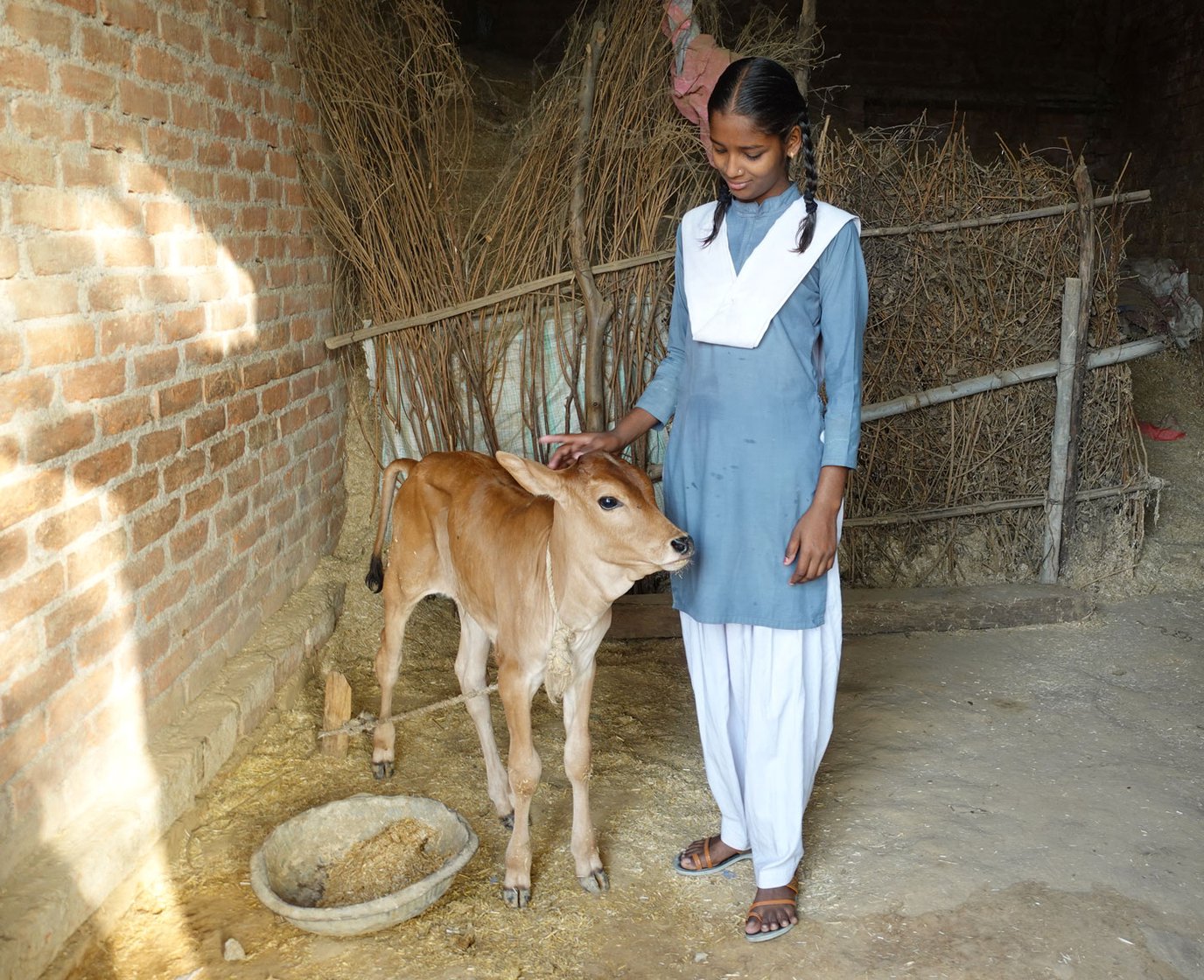
Left: After finishing all her chores, Kiran gets ready for school. Right: She says bye to the calf before heading to school
Speaking about healthcare for women, in his Independence Day address from the Red Fort in 2020, Prime Minister Modi had said that his government had done “a huge job in providing sanitary pads at one rupee each at janaushadhi kendras .” In a short span of time, he said, “more than 5 crore sanitary pads have been delivered to these poor women in 6,000 janaushadhi kendras .”
These janaushadi kendras provide generic medicines at affordable prices, under the Pradhan Mantri Bhartiya Janaushadhi Pariyojana. According to the union ministry of chemicals and fertilisers, there were 8,012 janaushadi kendras operating in the country as of August 2021, selling 1,616 drugs and 250 surgical items.
But there is no janaushadhi kendra anywhere within 5 kilometres of Kiran’s house. The only place where she can buy sanitary napkins is from a medicine shop, about 2 kilometres away from home, for a minimum of 45 rupees a packet. A price she cannot afford.
Besides the lack of access to sanitary napkins, facilities at school for menstruating young girls are terribly inadequate. “And when I am in school,” Kiran says, “I must wait till I reach home to change [the pad] because there are no proper dustbins. Sometimes one pad overfills and stains my uniform while I am in school, and I can’t do anything about it before the school is over.” Even the toilets are not clean. “It is cleaned just on the Sundays, so we get a clean toilet only on Mondays, and as days pass it keeps getting dirty,” she says.
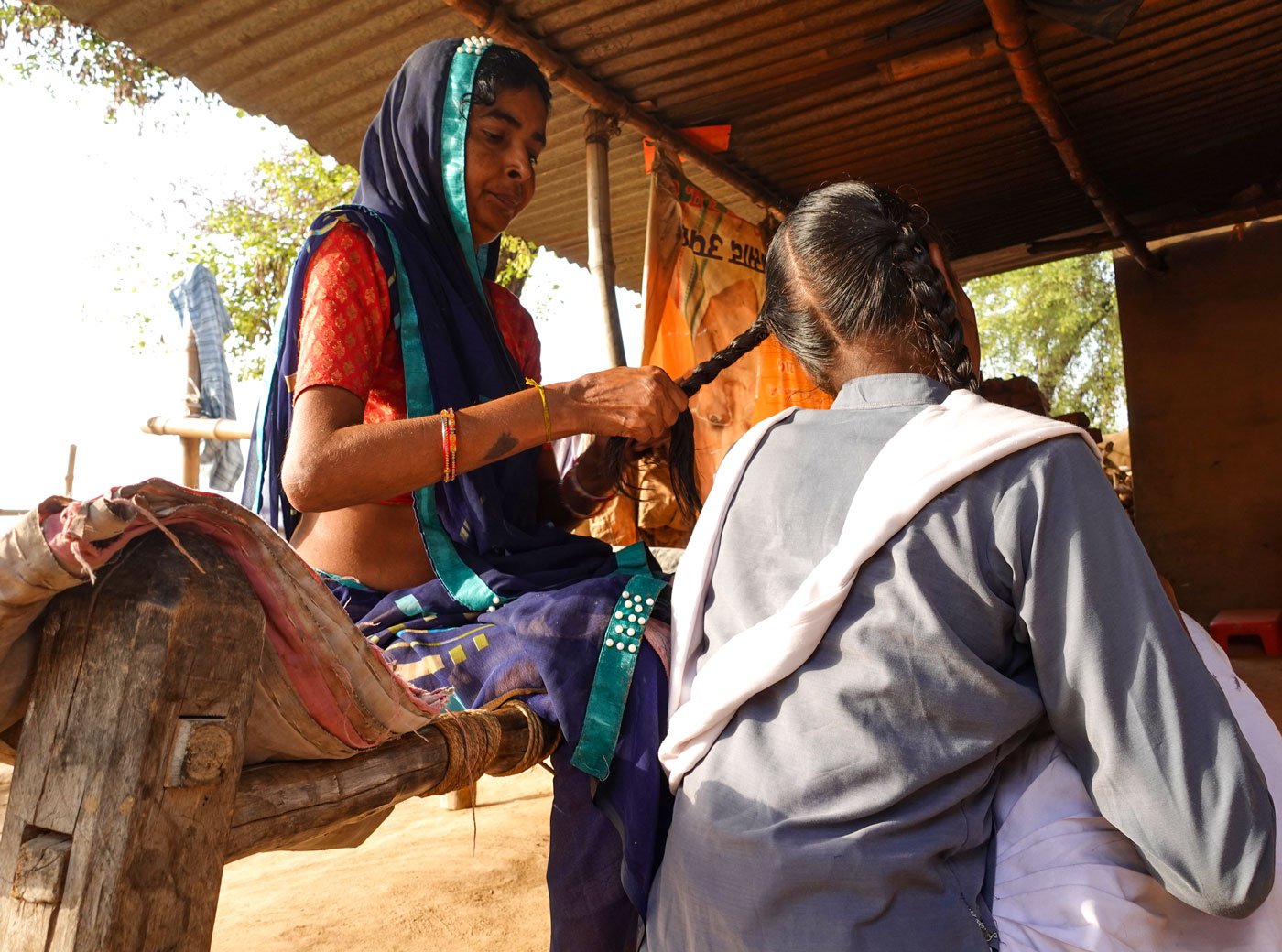
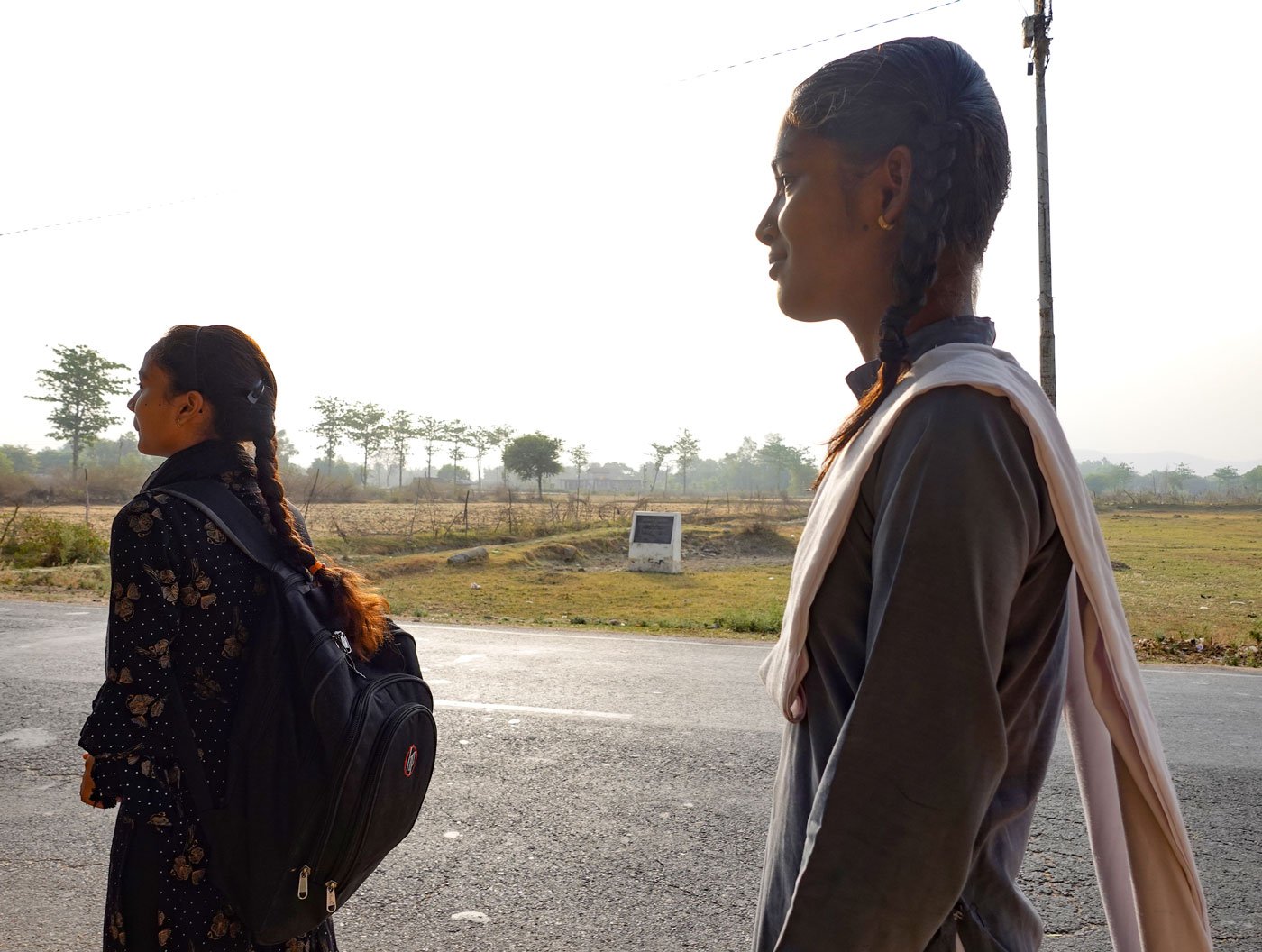
Left: Poonam Devi braids Kiran’s hair before she goes to school in the morning. Right: Kiran and her friend Reena walk to school together
A journal article on menstruation-related challenges of young women living in the slums of Lucknow city, explains that these challenges are at multiple levels – individual, social, and institutional. “On the individual level, young women lack knowledge. In the social sphere, young women experience stigma around menstruation, lack opportunities to discuss it, limitations around mobility and other activities during menstruation. At the institutional level, for example in school, there are few resources to support menstruating young women as toilets are dirty and doors are broken,” the paper says.
The principal of a primary school in Rajapur village of Lakhimpur Kheri district, Ritu Awasthi, argues that the real issue is the cleaning staff, and not poor disposal management in UP schools. “Sanitary napkins are being provided to the girls here and toilets also have incinerators, but things are not well because of the cleaning staff. Sweepers appointed by the government work under the gram pradhan [village head], so they listen to them only. Schools need daily cleaning, but it is happening only twice a week,” she says.
As the first few rays of sun enter Kiran’s house, passing through the three wooden cots, placed inside, she is ready, having finished her chores. Poonam has braided her daughter’s hair into two cute braids, decorating them with bright ribbons. “Kiran, jaldi aa jaa mai yahin ruki hoon [Kiran, come soon, I am waiting here],” shouts Reena Singh from outside. She is Kiran’s classmate and a co-traveller to the school. Kiran runs outside and both the girls hastily walk towards their school.
Jigyasa Mishra reports on public health and civil liberties through an independent journalism grant from the Thakur Family Foundation. The Thakur Family Foundation has not exercised any editorial control over the contents of this reportage.
